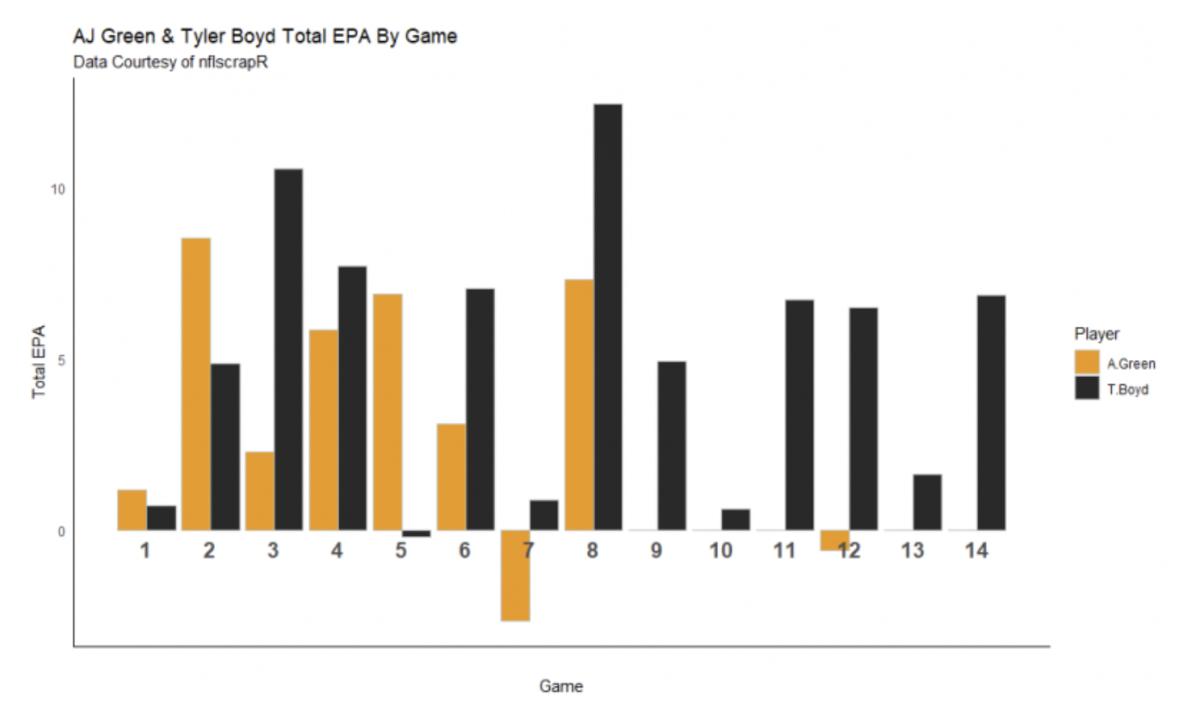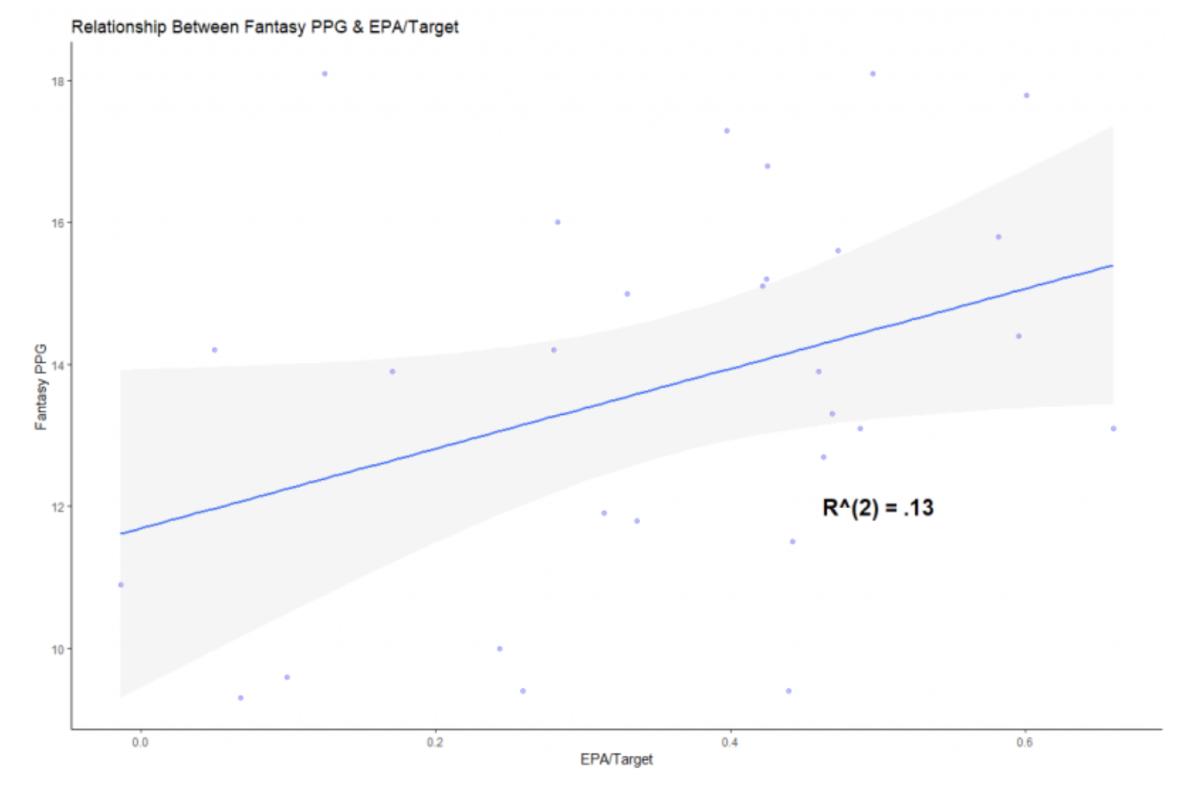Tyler Boyd's 2018 Season Was No Fluke

The Cincinnati Bengals spent the ninth overall pick in the 2017 draft on John Ross, seemingly relegating Tyler Boyd, their second-round pick from the previous year, to the background. That may have been the plan, but it never materialized. Quite the contrary, in fact. Ross flopped in the first two years of his career, while Boyd took off in year three. The 24-year-old broke through in 2018, catching 76 of 108 targets for 1,028 yards and seven touchdowns in 14 games. He finished the year as the No. 16 receiver in half-PPR leagues despite missing two games.
Heading into this season, the public doesn’t seem completely willing to believe in Boyd’s breakout. He’s being drafted as the No. 27 receiver in half-PPR leagues, coming off the board at an ADP of 64.4. While a slight fade of Boyd’s 2018 has some logic to it—with which I don’t happen to agree, for the record—him being drafted as one of the a WR3 is more than a little unjust. Boyd is being overlooked.
The biggest knock against Boyd this year is the return of a fully healthy A.J. Green. Cincinnati’s true No. 1 receiver missed seven games last year, and the admittedly attractive conventional wisdom goes that a full season from Green would siphon off too much of the volume from an already limited passing offense. This is a feeling, though, and not backed by any real statistics.

It just so happens that Boyd performed better with Green on the field. In the nine games Green played in 2018, Boyd averaged 8.2 targets, 79.7 yards and 0.56 touchdowns per game. Without Green, Boyd averaged 6.8 targets, 62.2 yards and 0.29 touchdowns per game. To be fair, many of the games without Green came with Jeff Driskel under center while Andy Dalton nursed a thumb injury, but the fact remains that Boyd thrived alongside a healthy Green.
The chart below shows Green’s and Boyd’s total Expected Points Added (EPA) per game in 2018. As you can see, Boyd was consistent throughout the whole season and set season highs while Green was on the field.

Why is it useful to compare the two receivers by EPA? As we know, fantasy points are a metric made up of real-life statistics, like yards, touchdowns and receptions. EPA is very similar. Much like fantasy points, EPA factors in yards and touchdowns into its calculation but it also includes in-game variables, such as down and distance, and spits out a number that measures how many points a player with those inputs added to his team’s bottom line. The best part, from a fantasy perspective? It has some positive correlation with fantasy points per game, with EPA per target explaining about 13% of fantasy production, as mapped by the chart below.

Boyd led the NFL in EPA per target among receivers with at least 100 targets. The players who ranked second through fifth—Tyreek Hill, T.Y. Hilton, Michael Thomas, Davante Adams—ended last year ranked first, 14th, sixth and fourth, respectively, in half-PPR leagues. Leading the league EPA per target has a pretty good track record as an indicator of staying power, as well. The league-leaders in the three seasons before last year were Doug Baldwin, Julio Jones and Thomas.
For Boyd to underperform his ADP, he’d have to finish the season as a low-end WR3 or worse. That’s a sizeable drop for someone who was an easy WR2 the previous year, especially someone who was a second-round pick and is in his age-24 season. There’s still time for this to change, but Boyd is becoming a low-risk pick with a high ceiling. Green didn’t limit Boyd when the two shared the field last year, and there’s no reason to expect that to change this season. New head coach Zac Taylor is an import from the Rams, helping get the most out of Jared Goff as their quarterbacks coach. There’s a better chance that Cincinnati’s offense improves rather than declines this year, and if it does Boyd will be along for the ride. Even if it doesn’t, though, treating a 24-year-old receiver who was a top-20 player at his position as a WR3 makes absolutely no sense. Boyd is shaping up to be one of this year’s biggest bargains.
